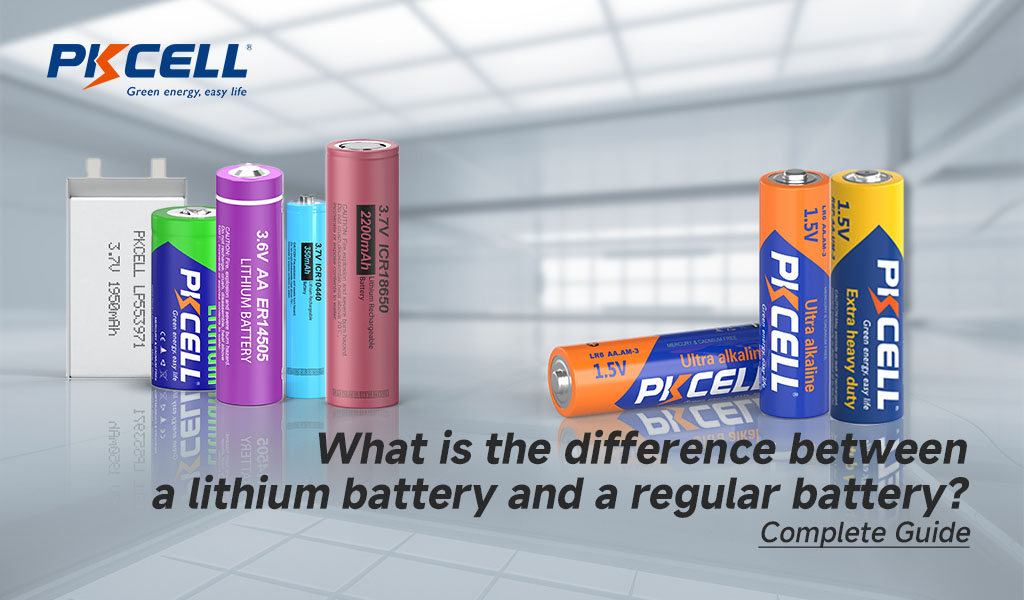When discussing the differences between lithium batteries and regular batteries, it’s important to delve into several aspects such as their chemical composition, performance, applications, longevity, and environmental impact. These factors collectively shed light on why lithium batteries have become increasingly prevalent, especially in modern electronic devices and electric vehicles, compared to traditional battery technologies.
Chemical Composition
- Lithium batteries and regular batteries differ fundamentally in their chemical makeup. Lithium batteries use lithium as the anode material, which is a lightweight, highly reactive metal. This enables lithium batteries to have a high energy density, meaning they can store more energy in the same amount of space compared to other batteries.
- In contrast, regular batteries, such as alkaline batteries, typically use a combination of zinc and manganese dioxide. These materials are less reactive than lithium, resulting in a lower energy density.\
Performance
The performance of lithium batteries is superior in several key areas compared to regular batteries. Firstly, lithium batteries can output a higher voltage, typically around 3.7 volts for lithium-ion batteries, compared to 1.5 volts from standard alkaline batteries. This makes lithium batteries more suitable for high-power applications, such as laptops and smartphones.
Secondly, lithium batteries have a lower self-discharge rate, meaning they lose their charge more slowly when not in use. While a regular alkaline battery might lose a significant portion of its charge in a year, a lithium battery’s discharge rate is much lower, making them ideal for use in emergency devices or in situations where regular charging isn’t feasible.
Furthermore, lithium batteries can operate effectively in a broader range of temperatures, making them suitable for outdoor and automotive applications where they may be exposed to extreme conditions.
Applications
Due to their high energy density and performance, lithium batteries are favored in many modern applications. They are the go-to choice for portable electronics, electric vehicles, and renewable energy systems.
In contrast, regular batteries are often found in lower-drain devices like remote controls, flashlights, and small household items.
Longevity and Cost
Lithium batteries typically have a longer lifespan than regular batteries. They can be recharged hundreds to thousands of times, depending on the specific type and usage, which significantly extends their useful life compared to single-use alkaline batteries. However, this increased longevity and performance come at a cost—lithium batteries are generally more expensive than regular batteries, both in terms of initial investment and the technology required to safely charge and dispose of them.
Environmental Impact
The environmental impact of both types of batteries must be considered. Lithium batteries, while offering superior performance and longevity, pose significant environmental challenges in terms of mining and disposal. The extraction of lithium and other minerals used in these batteries can lead to environmental degradation and water contamination.
On the other hand, regular batteries, while less efficient and predominantly single-use, also contribute to environmental pollution and waste. However, their materials are less hazardous, and their impact is more understood, leading to more established recycling and disposal methods.
In summary, lithium batteries offer numerous advantages over regular batteries, including higher energy density, better performance across a range of temperatures, longer lifespan, and suitability for high-power applications. However, these benefits come at a higher cost and with greater environmental concerns. As technology advances and the push for more sustainable energy sources grows, the development of both lithium and regular battery technologies will continue to evolve, balancing performance with environmental responsibility.
Why Choose PKCELL for Your Battery Needs?
When it comes to selecting batteries, whether for high-performance devices or everyday use, quality and reliability are paramount. PKCELL, a well-established name in battery manufacturing, offers a wide range of batteries including high-quality lithium options that stand out for their consistent performance, adherence to international safety standards, and impressive longevity. With years of expertise and a commitment to innovation, PKCELL provides reliable power solutions that meet diverse application needs, ensuring peace of mind and excellent value for your investment.
Post time: Mar-21-2024





